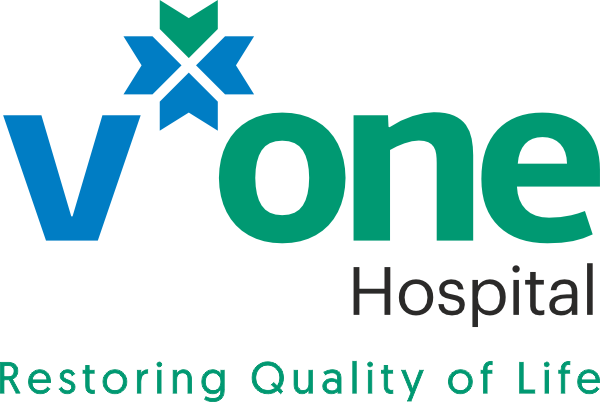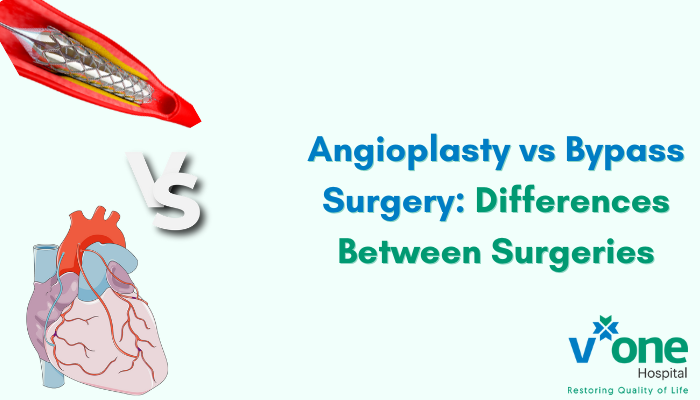Angioplasty vs Bypass Surgery: Know Differences Between Them
Angioplasty vs bypass surgery: Heart health is a paramount concern, and when it comes to interventions, two procedures stand out: bypass surgery and angioplasty. These cardiovascular procedures, while both aimed at improving blood flow to the heart, differ significantly in their approaches. Let’s embark on a detailed exploration of these techniques, unraveling their nuances, benefits, and considerations.
Bypass vs Angioplasty
Let’s find out the differences between angioplasty and bypass surgery:
1. Understanding the Basics
Bypass Surgery (Coronary Artery Bypass Grafting – CABG): This intricate procedure involves rerouting blood flow around blocked or narrowed arteries. A healthy blood vessel, often from the leg, is harvested and grafted to bypass the problematic artery, creating an alternative route for blood circulation.
Angioplasty: Angioplasty is a minimally invasive procedure where a catheter with a deflated balloon is threaded into the narrowed artery. Upon reaching the blockage, the balloon is inflated, widening the artery, and often placing a stent to maintain the expanded state.
2. The Procedure Journey
Bypass Surgery: A more extensive procedure that involves open-heart surgery. The patient is usually under general anesthesia, and the chest is opened to access the heart. The harvested blood vessel is then grafted to create the bypass.
Angioplasty: A minimally invasive procedure conducted under local anesthesia. A catheter is threaded through blood vessels, often starting from the wrist or groin, to reach the affected coronary artery. The balloon is inflated, widening the artery, and a stent may be placed.
3. Recovery Timelines
Bypass Surgery: Involves a longer hospital stay, often ranging from several days to a week. The recovery period at home extends over weeks to months.
Angioplasty: Usually, a shorter hospital stay and many individuals can return home on the same day or the day after the procedure. Recovery is relatively quicker.
4. Long-Term Outcomes
Bypass Surgery: Known for its enduring benefits, especially for complex cases. The bypass graft provides a stable, long-term solution.
Angioplasty: While effective, the need for periodic follow-up procedures is a consideration. Long-term success may be influenced by factors such as lifestyle changes and medication adherence.
5. Risks and Complications
Bypass Surgery: While major complications are infrequent, risks include infection, bleeding, and, in rare cases, stroke.
Angioplasty: Potential risks include damage to the artery, bleeding, or a re-narrowing of the treated artery.
6. Suitability for Different Cases
Bypass Surgery: Often recommended for individuals with diabetes, complex blockages, or multiple affected arteries.
Angioplasty: This may be more suitable for individuals with localized blockages or those considered high-risk for surgery.
7. Financial Considerations
Bypass Surgery: Generally more expensive due to the complexity of the procedure and the extended hospital stay.
Angioplasty: Typically more cost-effective, partly because it is less invasive and involves a shorter hospital stay.
FAQs for Angioplasty vs Bypass Surgery
Q1: Is one procedure safer than the other?
Both bypass surgery and angioplasty are generally safe, but the choice depends on the individual’s health conditions and the severity of the coronary issues.
Q2: How long does each procedure take?
Bypass surgery usually takes several hours, while angioplasty can be completed in less time.
Q3: Can these procedures be done in an emergency?
Angioplasty is often preferred in emergencies, while bypass surgery may be planned for more complex cases.
Q4: Do I need both procedures?
In some cases, a combination of bypass surgery and angioplasty may be recommended for optimal results.
Conclusion
Choosing between bypass surgery and angioplasty involves a nuanced understanding of individual health conditions, preferences, and the severity of the cardiovascular issue. Consulting with healthcare professionals becomes crucial in making informed decisions that align with the patient’s unique circumstances. Heart health is a journey, and these interventions are significant milestones on the path to a healthier heart.

